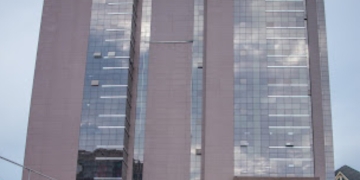
KAMPALA, UGANDA – The Uganda Revenue Authority (URA) has hailed the Digital Tax Stamps (DTS) for creating a fair market for compliant manufacturers. URA Commissioner General John Musinguzi Rujooki said that the DTS has helped to eliminate illicit goods and ensure a level playing field for manufacturers who are compliant with tax regulations.
Rujooki made the remarks while addressing manufacturers and the media at the launch of the report on the Impact of Digital Tax Stamps, organized by Private Sector Foundation Uganda in partnership with PricewaterhouseCoopers (PwC) at Serena Hotel, Kampala.
The Commissioner General committed to reviewing the concerns regarding the cost of implementing the DTS in Uganda. “Every policy bears first and foremost the interest of the manufacturer. We shall read this report page by page and work together for the common interest. We should have a discussion about the cost. The contract we have with the provider (SICPA) has details on how the cost will be reduced as we improve compliance and hit the threshold. Every time we hit the milestone, we negotiate the reduction,” Rujooki said.
He also confirmed that already there have been visible reductions in costs on stamps for spirits, beers, and Kombucha. Rujooki called upon the manufacturers to look at the bigger picture, citing that besides the pricing of the DTS, it has helped clean the market of illicit goods and ensure a fair market for manufacturers who are compliant.
“There are some areas we need to study carefully, for instance, the manufacturers of Kombuchas were not paying any tax, but they were taking up the market where those who pay tax are supplying their products. They therefore had to comply with this new experience, and they closed. That’s good in achieving the intended objective to clean the market for tax-paid products and increase the sales of those who pay tax,” he said.
Rujooki’s comments were in response to those of the East African Business Council Board Chair, also the communications director for Coca-Cola Beverages, Mr. Simon Kaheru, who contended that the costs of DTS are prohibitively high and a burden to manufacturers.
Mr. Zackey Kalega, the Commissioner for Internal Trade, representing the Minister of State for Trade, echoed the ministry’s emphasis on continuous engagement with manufacturers to harmonize revenue maximization and trade growth. He revealed that the Ministry is happy with the aspects of the report that highlight illicit trade.
“We have presented a paper to the ministry, and it will be discussed by senior management. The key agenda will be how we can handle illicit trade. As you may be aware, the biggest percentage of the private sector is micro-small and medium enterprises, and we realize that the majority of these are not applying the digital stamps, and they create unfair competition as well as give products to the consumer that are substandard,” he said. He added that the elements of the report consumer protection is key, and DTS should be applied across all businesses for fair competition and consumer protection.
Ms. Agnes Ssali, the Legal Director and Company Secretary, agreed that illicit trade is a sore in the belly of Uganda’s manufacturing sector. “We have 65% of illicit trade in the alcohol sector, and it has been exacerbated by DTS misuse, including under-declaration. Moving towards digitization is the solution,” she said.
Since the introduction of DTS in 2019, URA has conducted numerous workshops and training sessions to help businesses understand the importance of DTS and integrate it effectively into their operations. Nonetheless, non-compliance remains a significant hurdle. However, the report suggests that despite the hurdles, Domestic Revenue collections continued to grow significantly.
Before the implementation of the DTS, Local Excise Duty (LED) collections experienced significant growth with a 12% increase, reaching UGX 2.13 trillion from July 2016 to June 2019. However, with the aggressive introduction of the DTS system in the fiscal year 2020, there was a subsequent 7% average decline in LED collections. This decline in revenue was followed by a 13% average increase in LED collections, totaling UGX 2.74 trillion, in the period spanning from July 2020 to June 2023 (Post-DTS). This represents an overall LED revenue growth rate of 9% between July 2016 and June 2023.











Discussion about this post